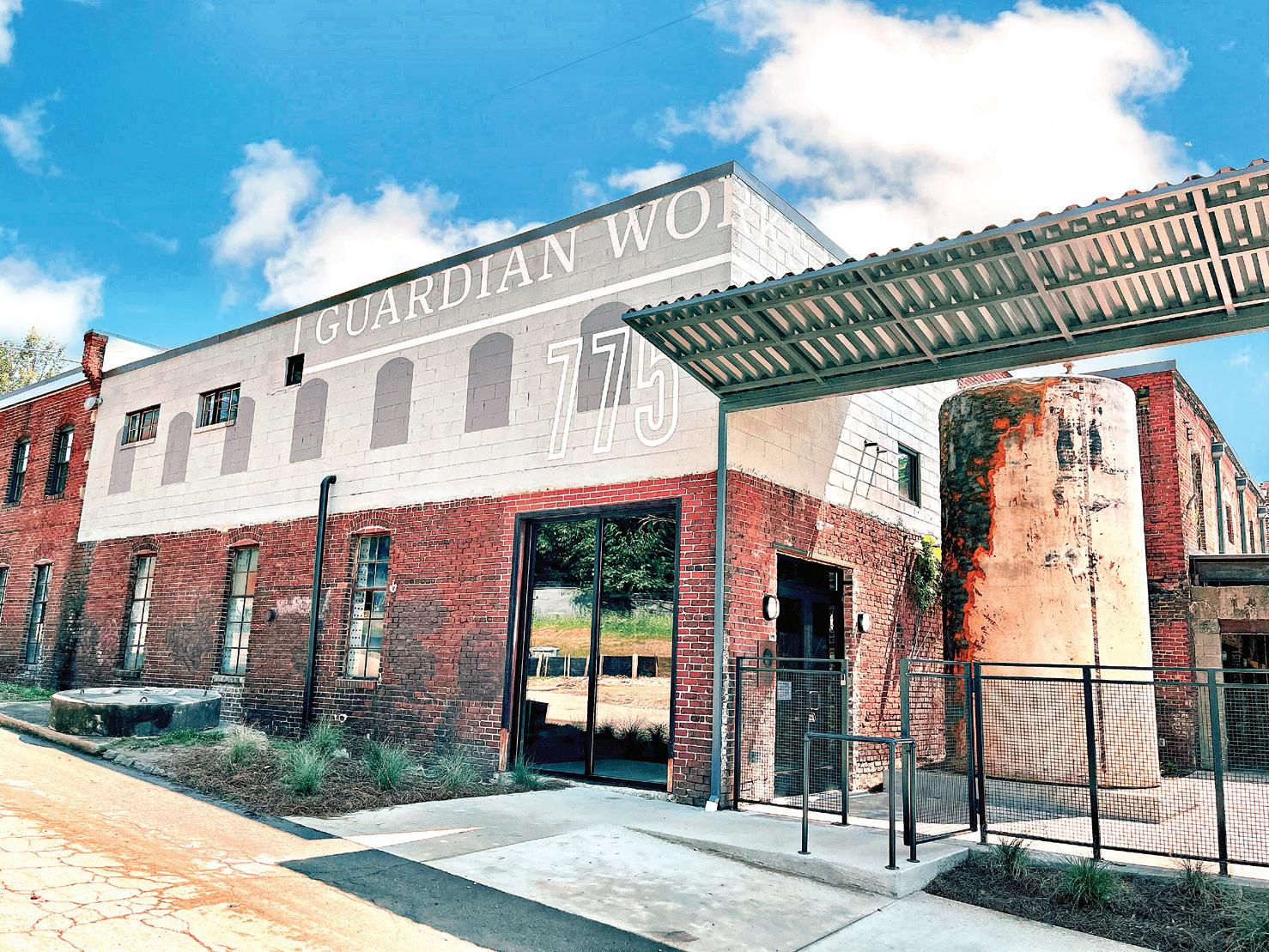SUSTAINABILITY
Recycling � Resources � Lifestyle
Protecting the Vanishing Night Sky
See the stars at Stephen C. Foster State Park.
A
s dusk became night, the red canyon walls that rose thousands of feet above the Colorado River disappeared into empty darkness and the clear sky filled with brilliant stars. I lay in my sleeping bag on the cooling sandbar º unable to fall asleep, unlike my sons beside me – and watched the constellations and occasional
Above the Water Line Sally Bethea Sally Bethea is the retired executive director of Chattahoochee Riverkeeper and an environmental and sustainability advocate.
aircraft move across the sky between the canyon rims, as the Earth turned.
20 July 2021 |
Our weeklong float trip on what has been called the American Nile was memorable for many reasons, but now, a dozen years later, I still think about that dazzling, starry window onto the universe and the sense of wonder that it inspired. In the years since, I’ve had other opportunities to experience dark skies – away from the smoky, orange glow of artificial urban light – in places like southern California’s Anza-Borrego Desert State Park, Wisconsin’s Door County, Isle Royale National Park, and, more recently, the banks of the San Juan River in Utah. Since civilization began, stars, comets, and planets have served as guides to track time – fundamental for growing and harvesting crops, religious rituals, and ocean navigation – and as the basis for stories used to suggest the origin of the universe and man’s place and purpose. When electric light pollution began to increase with the rapid growth of cities and highway systems in the middle of the last century, the night sky started to vanish. Astronomers and dark-sky advocates say that we’re losing the night sky so
gradually that people don’t realize what is being lost. As a resident of Midtown for the past four decades, I include myself in this group of poor observers. When did the sky above my house become so flat and featureless, except when a full moon dominates? I remember the starry winter skies of my childhood in Buckhead in the 1950s and 60s. An ordinary streetlight is thousands of times brighter than the stars on a moonless night and, unless it’s shielded, its light travels far beyond the area of intended illumination; an average outdoor light fixture emits a glow that can affect the darkness of the night sky for as much as 15 miles in every direction, according to the International Dark-Sky Association (IDA). Eighty percent of Americans can no longer see the cloudy, shimmering ribbon of stars known as the Milky Way from their homes, a startling increase from just a few decades ago. The progressively rare and fragile night sky is a resource worth defending for many reasons. Thirty percent of artificial light is wasted, shining in places where
it doesn’t benefit anyone. Lights left on at times and in places where they aren’t needed squander energy and money. Light pollution can also disrupt our sleep and affect ecosystems and animals, including the migratory patterns of birds and the nesting success of turtles. Spurred by satellite images of the Earth at night showing few dark areas across our country, the problem with light pollution was finally acknowledged in the 1980s. The dark-sky movement was born. Led by the IDA, it has inspired regulations and programs to promote energy-efficient outdoor lighting and formally recognize dark-sky preserves: protected areas that encourage stewardship of the night sky through responsible lighting policies, the use of efficient, well-designed fixtures, and education initiatives. In the past 20 years, the International Dark-Sky Places Program has urged communities, parks and protected areas around the world to preserve natural dark sites that contribute to climate change resilience, improve human health, and create tourism opportunities. Today, there are 177 certified dark-sky places around the world, two-thirds of which are in the United States, primarily in the West. Twenty-four certified areas can be found in Utah alone; its governor recently announced that the “astrotourism” industry expects to generate $6 billion and support more than 113,000 new jobs in the American Southwest over the next decade. Longtime Intown residents Stephanie and Tom Coffin have made dozens of trips crisscrossing the country over the past five decades. In the early years, they remember the spectacular dark night skies and bright stars easily visible from their camping sites. As the years passed, the Coffin’s realized that they were seeing fewer stars, due to urban light pollution and the brightly illuminated recreational vehicles that increasingly dominated their campgrounds. This past April, the Coffin’s found “a totally different experience” at Georgia’s only official dark-sky place: Stephen C. Foster State Park in the Okefenokee National Wildlife Refuge, which was certified in 2016 as a “gold-tier” International Dark Sky Park. “Gold-tier” means the sky is clear from all but the most minor impacts of light pollution. Working with the local electrical co-op, At l a n t a I n t o w n Pa p e r. c o m




















